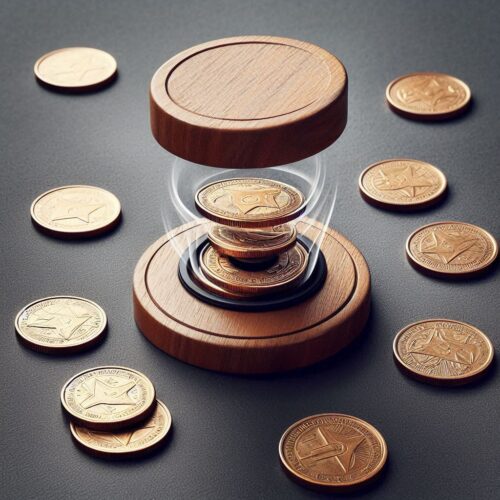The Spoon Bending Effect. The “Spoon Bending” effect gives the illusion of bending metal using only psychokinetic powers, creating a memorable experience for the spectator as they witness a spoon bending in their own hands.
The Spoon Bending Effect Magic Trick
Effect Summary
- Spectator’s Spoon: The spectator holds a spoon between their palms and, with subtle guidance, believes they feel it bending due to their own “psychokinetic powers.”
- Magician’s Spoon: The magician then takes a prepared spoon, subtly weakened to break under light pressure, and demonstrates bending it further, even causing the bowl to break off dramatically.
Method and Key Points
Preparation
- Choose Bendable Spoons:
- Start with inexpensive, easily bendable spoons from a thrift store. These spoons should have thinner handles and bowls to make bending easier.
- Preparing a “Breakable” Spoon:
- Take one spoon and carefully bend it back and forth at the bowl until stress fractures appear. These fractures should be slight and not easily visible to the spectator. This spoon will appear to bend and eventually break during your performance.
Performance
- Psychological Suggestion:
- Approach the spectator with both spoons in hand. Position the unprepared spoon closer to them, as people often choose the object closest to them due to subconscious suggestion.
- If they select the unprepared spoon, proceed as outlined below. If they select the prepared spoon, adapt as discussed in the Alternative Handling section.
- Creating the Illusion of a Bend:
- After handing the unprepared spoon to the spectator, drop your arm holding the prepared spoon to your side, subtly pressing your thumb into the bowl to create a slight bend. Keep this bend hidden until the reveal.
- Place the bent spoon in the spectator’s palm, ask them to cover it with their other hand, and position your hands over theirs.
- Ask them to rub their hands together to generate warmth through friction, suggesting that the warmth is causing the spoon to bend. Encourage them to believe that the spoon will bend through their own effort.
- The Reveal:
- After a few moments, have them open their hands to reveal the bent spoon, emphasizing the effect by holding it next to the unprepared spoon. This visible bend reinforces the illusion of psychokinesis.
- Magician’s Demonstration:
- Take the prepared spoon and begin rubbing it at the fracture point, claiming that the metal is becoming warm and pliable.
- Gradually bend the spoon back and forth until the bowl breaks off. For added effect, invite the spectator to hold the bowl as you manipulate the handle, creating a more interactive experience.
Performance Tips
- Verbal Cues and Suggestion:
- Use phrases like, “Can you feel it warming up?” and “The metal is bending under your touch,” to amplify the spectator’s perception of the bending process.
- Enhance the Break:
- When bending the prepared spoon, subtly hide the stress fractures with your thumb and fingers. Only increase the pressure when you’re ready to cause the bowl to break, adding drama by claiming it requires intense concentration.
- Alternative Handling:
- If the spectator chooses the prepared spoon, demonstrate the bending process on the spot. Then, use the unprepared spoon to let them attempt bending it, explaining that their powers are still developing.
- End with Misdirection:
- After the bowl breaks off, maintain a casual demeanor and quickly move on to another trick or conversation to keep the spectator from closely examining the spoon.
Final Thoughts
“Spoon Bending” is all about psychology, suggestion, and timing. By preparing a spoon with subtle fractures and employing gentle, suggestive guidance, you create an effect that feels magical and mind-bending for your spectator.




